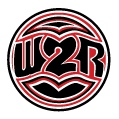Historically, the Halalt First Nation had villages on Willy Island (offshore from the town of Chemainus) and in the lower Chemainus Valley. Today, Halalt reserves are found on Willy Island and in the lower Chemainus Valley (although only the latter reserve is occupied).
The Halalt originate from the village of xeláltxw, which means ‘marked houses’ or ‘painted houses’, a reference to the fact that the houseposts in this village were decorated. According to information collected by Rozen (1985), this village was once located in the Cowichan Valley, at the spot where the Silver Bridge currently crosses the Cowichan River, at the south-eastern edge of the city of Duncan. According to Cowichan oral history, the forefathers of both the Cowichan and Chemainus people (Siyóletse and St’éts’en respectively) originated from this village.
The residents of this village later relocated to a village at the north end of Willy Island, the largest of the Shoal Islands located just off the mouth of the Chemainus River, perhaps in the early part of the 19th Century. When they moved, they took the village name with them. Rozen (1985) reports that, historically, there were at least five or six houses in the village in Willy Island. Although the entire island was designated an Indian Reserve (Halalt Island No. 1), the village was abandoned in the 1920s and the residents moved to the Westholme reserve on the lower Chemainus River (Halalt No. 2).
Hul’qumi’num Treaty Group
Physical Address:
200-200 Cowichan Way
Duncan, B.C.
Mailing Address:
PO Box 21028
Duncan, B.C.
V9L 0C2
Phone: 250-245-4660
Facsimile: 250-245-4668
E-mail: info@hulquminum.bc.ca
Toll free: 1-888-987-3289
